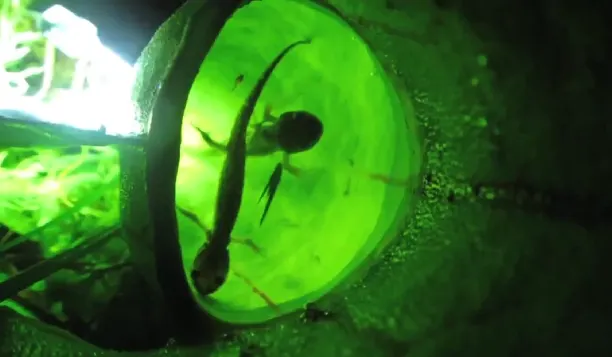
'Bog of horrors': Salamander-eating plant found in Ontario
The plants were found in a small bog close to a highway.
Scientists from the University of Guelph have discovered a "little bog of horrors" in Ontario's Algonquin Park, containing meat-eating pitcher plants that consume bugs and young salamanders.
While Canada's pitcher plants are known to eat the bugs and spiders that fall into their bell-shaped leaves and decompose as the cavern collects rainwater, this is the first time North American pitcher plants have been observed with salamanders.
"Prey caught inside the plant's specialized leaves is broken down by plant digestive enzymes and other organisms in the water held inside the leaf," reads a statement from the University of Guelph.
"Other factors may kill salamanders in pitcher plants, including heat, starvation or infection by pathogens."
SEE MORE:
Scientists have known about the existence of Algonquin Park's pitcher plants for hundreds of years.
For their study, the group monitored pitcher plants in a pond in fall 2018 and found nearly 20 percent contained at least one young salamander.
It's believed the amphibians were attracted to the plants by insects that were already trapped inside or may have entered them to hide from a predator.
The plants live in a bog that doesn't have fish, making the salamanders an important food source.
Study author and integrative biologist Alex Smith says the pitchers live in nutrient-poor soil and may have become carnivorous as a means of survival.











